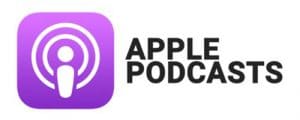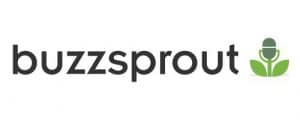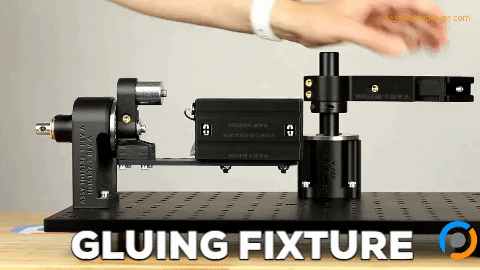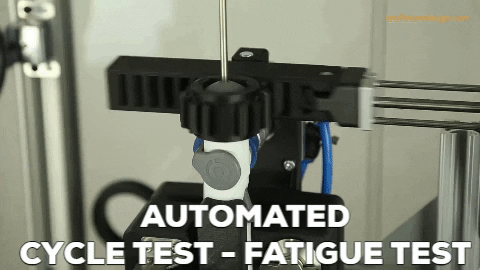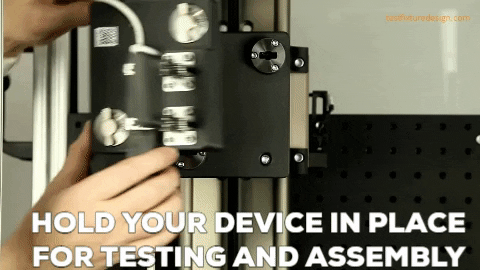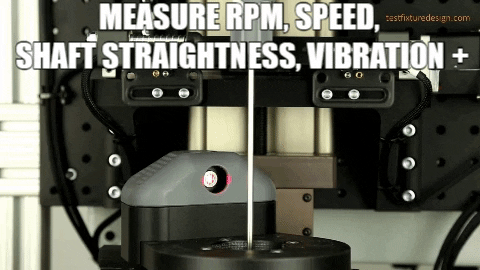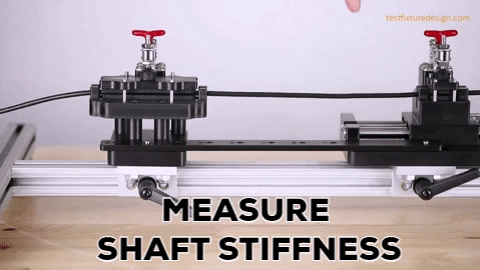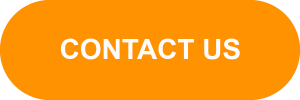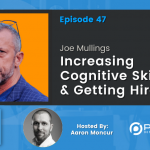Rich Sheridan | How To Build A Workplace People Love
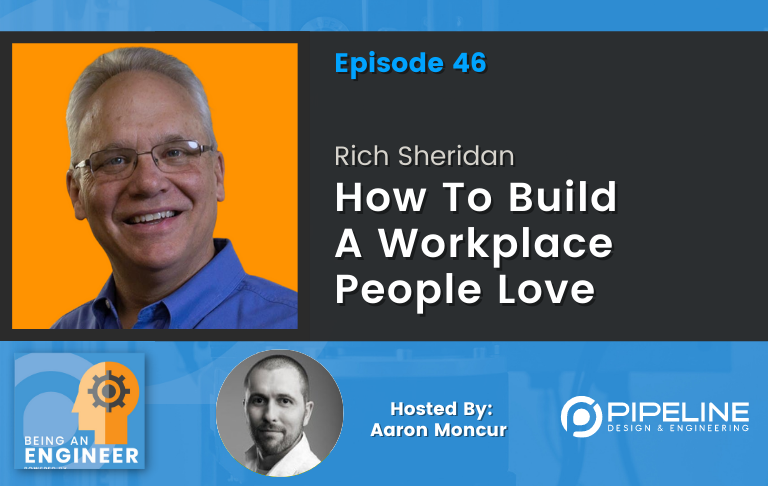
Who is Rich Sheridan?
Rich doesn’t just talk about joy in the workplace. He lives it every day at Menlo, the custom software and consulting company he co-founded in 2001 in Ann Arbor, Michigan. Rich’s passion for inspiring organizations to create their own joy-filled cultures leads him to address audiences across the world as well as throughout the United States. Today, listen to Rich first hand how to build a workplace people love. We also talk about other things such as pairing and understanding the ACTUAL problem. Tune in to find out more.
Rich is CEO and Chief Storyteller at Menlo Innovations. He is a successful entrepreneur and author of two best-selling books—Joy Inc.: How We Built a Workplace People Love and Chief Joy Officer: How Great Leaders Elevate Human Energy and Eliminate Fear.
EXPAND TO VIEW EPISODE TRANSCRIPTION
SUMMARY KEYWORDS
pairing, menlo, talk, joy, team, project, problem, aaron, office, work, software, question, memo, rich, book, spend, customer, mission statement, human, environment
SPEAKERS
Aaron Moncur, Rich Sheridan, Presenter
Presenter 00:00
The being an engineer podcast is a repository for industry knowledge and a tool through which engineers learn about and connect with relevant companies, technologies, people, resources and opportunities. Enjoy the show.
Rich Sheridan 00:16
How about we understand the humans before we start figuring out what problem it is we’re trying to solve.
Aaron Moncur 00:35
Hello, and welcome to the being an engineer podcast. We’re speaking with Rich Sheridan today who is CEO and chief storyteller at Menlo innovations, which is a successful entrepreneur and author of two best selling books joy, Inc. How we built a workplace people love and chief Joy officer How Great Leaders elevate human energy and eliminate fear. Rich’s passion for inspiring organizations to create their own joyfilled cultures has led him to address audiences around the world as well as throughout the United States. Rich doesn’t just talk about joy in the workplace. He lives it everyday at Menlo, the custom software and consulting company he co founded in 2001, in Ann Arbor, Michigan. So that that is the the formal introduction rich, but I have to add my own little introduction as well. I have to admit I’m a little bit starstruck right now. You have been kind of an idol or a hero of mine for several years ever since I read Joy Inc. I’ve had Lisa and Andrew from your team on my show in the past, and they were delightful and wonderful. I actually did one of your virtual Menlo tours, and I’ve taken your your project management workshop. So anyway, all that is to say I’m a huge fan. And just so excited and grateful that you’re able to spend some time with me on the podcast today.
Rich Sheridan 02:07
Well, great to be with you, Aaron. It’s always fun to be with fans, especially one that spends money with us. Thank you.
Aaron Moncur 02:15
Even better, yes, this is fantastic. Okay, well, can you take just a couple of minutes and share with the listeners, you know your story? Where did you start and how Menlo innovations came to be?
Rich Sheridan 02:32
Yeah, and you’re and I know, a lot of your audience are in the technical field, engineering field, and so on. So I can relate to them. I started out like, in soccer, I was a programmer. You know, some refer to us. In some realm as software engineering, software engineers, I think sometimes it’s a stretch of the term engineer, given. Our traditional methods are solid as many other engineering methods. But I’m certainly on a mission to change that myself and inside of our industry. But I started out typing code. And you know, what’s fun is right now, just about this very day. If the years ago, in September of 1971, freshman in high school, I touched a computer for the first time. So teletype clocked out on A roll of paper, I typed in a two line program type the word run it came back in the roll of paper said hi rich, because that’s what I told it to do. And I’ll be honest, I was hooked. I knew what I wanted to do the rest of my days. I’m 63. Now I was 13, then, and I’m still in the same profession. So I think I chose pretty darn well, yeah. But in the midst of a lovely engineering career rise, when I went from programmer one to career to Vice President of r&d at the other end, I was falling out of love with the profession I thought would carry me for a lifetime, probably, I’m gonna just get some of your listeners, I will find themselves from time to time or maybe for a long time, like I was in their personal trough of disillusionment, because things aren’t going as well as they wanted them to. And that’s what was happening for me. I saw problems I saw trouble I was firefighting. Every day, I was answering difficult phone calls from angry customers because the software we designed wasn’t working for them or wasn’t working at all. And, you know, just long nights, lots of time away from family just trying to fix problems that we had created in the past. And I was consumed by a thought. I was consumed by a thought perhaps the same reason people come and listen to your podcast. I thought things could be better, way better. And I was determined to find it. And my journey out led me to authors and books. That’s why I love being an author now because I know books can inspire clearly. That’s why we’re talking because my book inspired you and I love that. But what I wanted more than anything else from an engineer’s heart was what I believe is The only thing that thrills an engineer in their work, and that is to see their work get out into the world, and delight the people it’s intended to serve. There is no everything else in engineering world is a compromise. If we don’t get to do that, we have to find something else to give us joy, whether it’s a paycheck, or a title, or where’s my office, or how fast is my computer or anything like that. But the real joy of an engineer is to see the work of their hearts, their hands in their minds, get out into the world, and delight the people it’s intended to serve. We are servant hearted people in the engineering profession. We do work to delight others, I’ll bet, like most of your audience, like me, loves to do projects, on the weekends at home building something for someone else. I just helped my daughter and her husband do this nice little shiplap wall in their house, and they were so delighted when they were done. I’m like, I did this with my hands. This is a big deal. And so Menlo innovations, that company I founded now, 20 years ago, we just passed her 20th birthday in June, was built to end human suffering in the world as a relates to technology, we wanted to return joy to what we believe is one of the most unique endeavors mankind has ever undertaken the invention of software. And so and I’ll be honest, we did it. We are living proof that a better way as possible. We found it, we apply it every single day. This is not a theoretical discussion, you and I are going to these are very practical techniques we use to get to that kind of joy here every single day.
Aaron Moncur 06:42
Well, I can see why you hold the title chief storyteller because I just get chills listening to your wish that was That was wonderful. Maybe a good segue is if I was if I were a visitor at Menlo innovations, I know things are a little bit different now with COVID. But you know, generally speaking, if I were to walk into Menlo, what, what would I see? How is your environment put together in a way that facilitates this non theoretical, but actually in practice and working models that you’ve developed?
Rich Sheridan 07:15
Yeah, and I will tell you, it’s not only what you see, it’s what you don’t see. And it’s what you feel when you walk in the room. You know, Aaron is you know, we we bring guests in, by the 1000s. Every year, people come from all over the world just to come see how we do what we do. So different. And I have often had the chance that our big front glass door as it opens to walk in with our guests. So I can hear their response when they first walk in the room. And almost universally, the first word out of people’s mouths, the first time they ever visit is wow. And I think their reaction isn’t to what they’re seeing as much as what they’re feeling because they can actually feel the human energy in the room. Now what they see and what they don’t see or important. What they don’t see are walls and offices and cubes and doors. What they see is one big open room. Yes, one of those open office environments that are often vilified most magazines. And then they see how the people are organized. Sitting two people to one computer talking to each other all day long. The tables are pushed together, they the team has full control over the space. And they choose to push the tables, these little five foot tables front to front side beside lightweight aluminum table teams in full charge of exactly how the tables are laid out. And they choose to push them together. So not only are they working shoulder to shoulder in pairs and computers, but the pair’s themselves are working shoulder to shoulder around a group of tables. And they’re in conversation. There’s no headphones. There’s no There’s, you know, it is a noisy environment, which is where that human energy comes from. But it’s not the noise of chitchat. It’s actually the noise of work.
Aaron Moncur 09:15
But you mentioned the mission that Menlo has, which is to end human suffering in the world as it relates to technology, which I just love so much. And I recently read Simon cynics book, the infinite game and he talks about this, this idea of a just cause, which I think your mission very much qualifies as to end human suffering as it relates to technology. I recently came up with with my own mission statement I’ve been I’ve been thinking about the messaging app pipeline for years, and I kind of bounced back and forth and back and forth. But really it was those two things Simon cynics book and reading mundlos mission that helped me finally landed on what what I think is the right mission statement for us which, which is to develop equipment that r&d and manufacturing teams love to use. Because I’ve had so many interactions with these teams, using equipment that is just hard to use. And these poor operators are spending more time trying to make the equipment work than getting their job done. Anyway, I was wondering if you could talk a little bit about how you came up with this this mission statement?
Rich Sheridan 10:32
Well, you know, fun for me, I have three daughters. They’re all adults now in their own work lives and so on. And I was one time having a discussion with my middle daughter, who also went down a technical path and got a master’s degree in data science. And she’s like, Dad, I want what you have in your career. I want the joy you’re experiencing. And I smiled, I said, Well, Lauren, you got to understand. My joy was born out of 15 years of utter pain. So this didn’t come overnight. It wasn’t like I woke up one day and say, Oh, I got this great new working, I’m gonna go work this way. No, this was my own personal pain. Right? What was I seeing in my life and my career. So you know, anybody who knows software and you know, in quite frankly, most other engineering professions, know, we often live in chaos. Right? You know, things go bump in the night, you you, you’re being pushed, you’re working, you’re tired, you’re working overtime, you’re trying to get something done. And somebody’s pushing you beyond your limits, and you get it out the door, and it breaks the second it gets out there. And people hate it, because they don’t understand how to use it. And, you know, that was my life, you know, running from emergency to fired fight, to difficult phone calls to meetings inside the company about blown budgets and miss deadlines, and, you know, and all this kind of stuff. And I’m like, it’s just got to be a better way. And what I saw was three kinds of suffering in this in this world, in my world. One was for the people who pay for software to be built, who are often greatly disappointed in the results, even though they sometimes they spend hundreds of millions of dollars. And the projects have nothing to show for it. And the second is to the people who use it, those poor end users who my industry has learned to call stupid users. And then we write dummies books for those poor people. Like what other industry can get away with calling the people they serve. And they’re a dummies book for them. Then we get them to self a face and say, oh, you know me, I’m just a stupid user. And what are we supposed to standard? Go? Good? We got you right, where we weren’t, you know, what if we honored the people we intended to serve and delight them with their users experience without making them think like me? Because that’s the problem is that most software engineers write code and they don’t understand why nobody knows how to use it. Because they’re like, all it makes sense. To me. It’s like great, but you don’t do the kind of work they do. You don’t think like they do. They don’t think like you do. Why? Why should we make them think like the computer? Why don’t we make the computer think like that. So that was a big piece. And the third piece for me was the people who do the work. You know? W Edwards Deming said it best he says, All anyone wants is a chance to work with pride. And that’s what I wanted. I wanted that for me. And I wanted it for them. I wanted it for the people who work for me. Because if you you know, and I will say there are many people in the software engineering profession, who have worked for years on a project. And then something goes wrong, a budget gets blown, a deadline gets missed. And some boss comes in says, Hey, guys, by the way, the project you’ve been working on for the last five years, it’s canceled. And, you know, and I’ll guarantee you most people in our profession, busted their butts for with overtime and weekends to try and hit this crazy deadline. And then the boss comes in cancels it. In you know, and somebody might say, Well, you’ve got to still got a job. You still got a peach? No, no, that’s what this is about. Think how dispirited and demoralized the team is that has their project canceled like that? How many times can you go through that and your career, and I saw it all the time. And so those kinds of sufferings for the people who pay for the work for the people who will one day use the work and for the people who do the work? That’s where I wanted to end the suffering.
Aaron Moncur 14:39
That’s fantastic. This idea of joy is a central focus of your books and of the way that that you’ve built Menlo, can you share a little about how you hit upon using joy is one of the building blocks of your business.
Rich Sheridan 14:55
You know, it’s funny, it goes back to an author we both have reciate Simon Sinek he started giving his famous Start With Why talk probably background 2010 Just to TEDx Puget Sound talk I mean, and now it’s like one of the few to watch YouTube videos in the history of mankind. And but you know, Simon Sinek wasn’t Simon Sinek back then like he is now. And he was just giving this talk. And he drew these three simple circles. And he said, most people know what they do. Why they don’t know why, how they do it. But almost no one knows why they do what they do. And he said, if you look at the famous companies, the ones who are excelling, they start with their why they talk about their how, and maybe they get to their what, and then really convicted me I saw that in about 2010. And quite frankly, somebody who saw that video sent it to me and they said, Would you do this? You do exactly what Simon says. You start with why. And I talked about it. I really don’t. I talked about we’re a software design and development firm, we have this unusual way of working to people on computer, I might eventually get to the why the joy, the ending of human suffering. But quite frankly, it was the third thing and it might be last and it might not get talked about at all depending on how the conversation went. And I was convicted. I thought you know what, we have a strong wind center, I’m going to start with five next, I’m gonna give it to her. And I had this group coming in, they were assembling at the front door, and I was ready for him. And but I wasn’t ready. I was like, What am I gonna say? What would I? How would I express my way to them? Right. And I went back and I looked at our mission statement that had been there almost since our founding. I saw the inhuman second. So that’s it. I’m gonna spend the whole time opening up talking about suffering I want when people think about Menlo I want them thinking about suffering. No, no, no, that’s not it. And then finally, almost waiting for me like a gift at the bottom of our mission statement, said our goal since our founding in 2001 is to return joy to software development. And I thought that’s it. That’s our why that’s why we exist. That’s what we believe. So I get the scoop Command said Hey, welcome to memo, you’ve come to a place that is very intentionally created a culture focused on the business value of joy. In Aaron, the first time I did this rice, one line, they’re like, What are you talking? Why are we here? We’re here to learn about this crazy software team you have and how you work. And I said, Okay. And then they asked me, they said, What difference would join me? Can I challenge them right back? I said, Okay, I’m gonna take you back and show your team show you how they work, what they do, how we do it, all that kind of stuff. pretend for a moment that you were bringing a software project here something important to you. And that some weird reason back in that room, half of those people had joined the other half didn’t, which app would you want working on your project? And they said, well, we want the joyful half. Of course, I said why? Why would you care? What difference would it make? And they said, well, they care more about the outcome, they’d be more productive. They they be easier to work with, if they you know, they’d produce better quality. I’m like, okay, so you’re with me. And there’s impact, tangible business value to join this? Isn’t that some material topic? I said, Now, let me take you back and show you how we were. In everything you see here, everything you don’t see her. I can draw short, straight line back to Joy. And I will tell you, Erin, at that point, it changed everything. I got invited to Phoenix to give a talk to the ASQ conference, your audience will probably know the American Society for Quality Conference on Lean and Six Sigma. These are pretty serious mathematicians at this conference. And I’m about to talk to them about joy. I thought, Oh, my goodness, this is the riskiest thing I’ve ever done in this stage of my life. And when I got done, they stood up, they applauded and they rushed the stage to grab every piece of material I bought. And I knew I’d hit a nerve here something that was really important, because let’s face it, how many of us no matter what our professions are, are living lives of quiet desperation at work.
Aaron Moncur 19:18
Yeah. We, I recently introduced this this new mission statement to my team for pipeline this developing equipment that r&d and manufacturing teams love to use. And just a few days after I first introduced it, one of my engineers came up to me and he said, No, I was working on this project. And I was thinking about what you said about building equipment that people love to use. And it made me change my approach a little way. And I thought to myself, wow, it’s maybe what’s really is the right thing. Yeah, it’s working. Someone actually listened to what I said. And it affected the way that they worked and Then we recently delivered that project. And the customer sent us an email just yesterday, I think it was, and said, Hey, this is working great. We love this thing. We love using it. And I thought, wow, it’s like, Oh, what a tremendous feeling. And the customer sent it to my engineer and just kind of copied me. And I could see just the pride in this engineer of what he had done and delivered to the customer. And it was that joy that you’re talking about, you know, it’s funny, we go to work, we don’t think about joy, because the word joy that doesn’t really fit with corporate America.
Rich Sheridan 20:40
Yeah, it’s for choice for afterwork.
Aaron Moncur 20:43
Exactly. Yeah, that’s, you know, talk about that at church or in your family. Something, yes, yes, this is work. This is serious stuff. But I saw joy in this, this engineer, I could hear it in his voice. And so I agree 100%, with with everything, you’re saying, I just I love it so much.
Rich Sheridan 21:01
Well, and I and I tell people that, you know, if we can get to that point where we delight others, the thing an engineer wants more than anything else, and you describe the exactly as they want people to come back later. So really, you got to work on that. I love that product. I use it every day. Now beautiful thing is i in i am going to make a guess about your mission, the way you’ve described it, that the people you’re talking about who are going to love what you do. Don’t aren’t actually your customers in the sense of, they don’t pay for the people who use your product, don’t pay for your product they use their employer buys it, some procurement team buys it, your salespeople are selling to a purchasing agent inside company. And eventually, one day your product shows up on a plant floor somewhere and somebody’s got to use it. They don’t know who you are, they don’t know. And they probably are cynically Oh, here, we get another business. You know, new equipment is supposed to be so good. And then all sudden, they start using it like, wow, this is amazing. I love it, this makes my life better. My job is better than nothing, right? And then they start fighting their way back up the chain to find you or find your team. It’s who did this. I’ve never had a product that’s so easy to use. And that I will tell you, and you’ve got the story now, which is beautiful, it is pure. There’s no question. And I’ll tell you the storytelling part of my title is an important one. And you’ve got a story now tell that story over and over and over again, because it’s an important part of what you’re trying to accomplish.
Aaron Moncur 22:35
I hadn’t even thought about that. But you’re absolutely right. I need to remember to tell this story, not just to our customers, but to our team.
Rich Sheridan 22:42
And yeah, especially to your team, especially to my team, because it’s hard work. What you do is hard, right? You can’t be happy every minute of every day. No, this is hard work. And it takes a long time. I’m guessing the products you build are not like, hey, let’s put together a new product for a team next week. No, often probably years of labor. And then one day those joyful messages come back. And you got to share them and you got to share them over and over again or people forget the mission, right? It can’t just be a poster on the wall or once a year rah rah speech.
Aaron Moncur 23:17
Yep, absolutely. One One of the the critical factors in men, Lowe’s joyful culture, is this idea of pairing. Can you talk a little bit more about what is pairing? How did you come across the idea of pairing? And how have you been able to make that work?
Rich Sheridan 23:39
Yeah, the concept came to me in a book that I read back in May, we’ll call it 1999, early 2000, by a guy, fellow programmer named Kent Beck, who I think was just as frustrated as I was with his own career. And he kept asking himself, do I always fail? Or are there some projects that actually succeed? And he started analyzing the success stories, which I like that kind of approach, right? Don’t Don’t try and figure out what’s wrong and how to fix it, figure out what’s working and how to replicate it. And that’s what he did. He said, he started asking himself some important questions that he cataloged in this book that I eventually read, called Extreme Programming, explain. And what he said was, you know, almost every big project I worked on, fail. The projects that really succeeded were the tiny project, the short projects that projects with a clear outcome in a short period of time and to get feedback. And so his thought was, what if we just take the big projects and make make them a series of smaller projects, right, and this birth, the whole iterative and incremental approach to software development that ultimately led to the Agile software development movement. And so he just started looking at all these little things he did on the projects that wildly succeeded. And he came on the site. He says, you know, when we had to hit a deadline, and it had to work the first time, and it had to be high quality, I’d usually go grab Aaron and I pull him next to me at the air and come here, sit with me while I type in this code. Check me as I’m typing things in ask me questions about it, the double check me, challenge me. And he said that code was always rock solid. And he says, if that works so well in crisis, what’s the possibility could work all the time? And that was the idea of turning up these practices, as he put it to the extreme. And so he said, if we use them in crisis, why don’t we think about using them all the time now one of his crisis modes, which I could completely relate to, even though I had the same pair programming experience he did under certain deadline issues. He said, How often when there was a big crisis, do people say, Hey, guys, let’s just come into your the big conference room, let’s not go to our offices for the next month, let’s just hang together in one big room, shoulder to shoulder with the whiteboards nearby and just like work through this thing, and in everybody who ever had that experience in their careers, was like, you know, what, how was the best work commit ever had? I can’t believe how much we got done in such a short period of time. I can’t believe how much fun it wasn’t simply about support. I can’t believe how much energy about the work. I wanted to get to work early, stay late, because there was this camaraderie there was this human energy, we got shit done. And so now what happens, right, the project ends, and everybody goes back to their offices and keeps. And they lament, the slowness, the bureaucracy, the meeting load the slow decision, or no decision making and all they can and can’t just ask the question. Why don’t we work like that all the time. And that’s why memo has no walls, says cubes or doors. So the pairing concept came out of that book. And I will tell you, it was not well received when I first brought it out. First time I suggested to my team Hey, guys, I’m thinking I’m gonna pull you out of your offices and keeps I just read this book, we put you on a big open room and we share a computer and have you share your code. And they looked they wouldn’t even look at me. I mean, it first first blush you I was in VP of r&d. So I had the perch, I could make this happen if I wanted to. But I knew making stuff happen that way isn’t good leadership and you don’t get a lot of good followership. They wouldn’t even make eye contact with me here and they look down the floor. They’re like, Oh, God, let him you know, please, you know, if I don’t look at him, he’ll go away. And he’ll forget about it sooner or later. And finally, one of my guys raises and I think, Gil, tell me what you think about this idea. And he says rich blood may him murder, don’t do it. Don’t pull me out of my office, don’t put me out of big open room. Don’t make me shared computer, please. Don’t let me share my code. It’s my code. But I did have two guys who wanted to try it. They came to me afterwards, they didn’t, they saw the controversy. So they didn’t want to say anything in the meeting. And so we just want to try this. One of the guys had already told me he was quitting. Because he was frustrated as I was. And he was at the frontlines. I was top of the deck there. And he said, you know, Rich, I need to reference on my resume. I’m, I’m not going to stay here. I’m too frustrated, like you are, but I gotta, I gotta leave. But he was one of the guys who volunteered to try this parent thing. And he stabbed me three weeks later in the parking lot. As we were walking into the office, and he says, Richard, are you still going to pay me to work here? I said what? He goes, this pairing thing is so much fun. We’re getting so much done Disney feel like work anymore? I’m not sure I should have paid. These were my responses there and blood mayhem, murder, I will work for you for free.
Aaron Moncur 28:49
Opposites. Yep.
Rich Sheridan 28:50
And you know, when I found that you’re making important changes your pay attention to the energy from the edges. And those were two edge energies right at opposite ends of the spectrum.
Aaron Moncur 29:02
Yeah. That’s, that’s amazing. So we have tried the pairing approach, we did it on two or three projects. And on all of them, we went over budget. And so we stopped doing it. And I imagine there are others out there who have heard this paring philosophy and who have tried it, and for whatever reason decided Nope, we can’t do it and kind of went back to the way that things were. What what coaching or advice would you give groups like mine or the others out there that who have tried this to successfully implement pairing?
Rich Sheridan 29:39
Well, you know, again, I’m a let me be very clear. We are a living breathing example of a company that does things the way we do them. I write books about I’m gonna give talks about people coming in doors, but in no way am I trying to tell anybody we have found the one true way of working okay, so I just want to be very clear. I You know, I will be a big advocate preparing for a bunch of different reasons. The real key Aaron is, and this is important in software, it’s probably important in your world is because people always ask me, How much does this cost? And what’s the cost benefit analysis? And the question is ask them back is, or the statement I make back is, it depends on where you measure.
Aaron Moncur 30:24
Right? I can see that. Because
Rich Sheridan 30:27
if you’re talking about typing speed, we’re cutting that in half. Because only do hands on a four on the keyboard. Yeah, so now I can guarantee you programming has never been about typing speed, right? Ever, right? If it was, we’d be sending all our programmers to Mavis Beacon typing classes or something. Right. But it’s never been about typing speed. It’s always been about problem solving. And so now the question is Where Where else could you measure to see what the true cost is? And what we choose to do is measure out at the ends of the project after the software is delivered, how much rework is being asked for? How many catastrophes are you having, how many firefighters how much emergency work do you have to do to repair the work of I will simply say the incomplete problem solving have individual heroes working on their own, especially when they’re tired. And so for us, when we measure out far, here’s the measurement I have, I mean, it’s as concrete a measurement as I can give you. In my old life, pre memo pre moving to this kind of model. I would guess I had on average, two, software emergencies, on average,
Aaron Moncur 31:44
per day, day per day now,
Rich Sheridan 31:47
firefighting galore. Phone’s ringing off the hook with problems problem reports stacking up, you know, everybody unhappy, the people who do the work demoralized because they never had a chance to work with privates Deming said, and it was just that was my life. That was what I was trying to escape. We are 20 years in here, 20 years into this process. Now, I’m not going to claim that it’s just about pairing. But this is a significant part of what we do. To remember, I said two a day, yeah, to in 20 years, two soccer emergencies. In 20 years, most of my team who’s only worked here came here out of college, or career for even 15 years, still doesn’t still has never directly experienced it, because they weren’t on the projects where they occurred. Can you imagine you went, you’re going to go your whole career potentially, without ever having a software emergent. I even have to tell them what that means. They don’t even understand like, they’re like, What do you mean emergency? What does an emergency look like? Oh, that doesn’t mean we’re bug free. But we are emergency free and the quality that’s produced by two people working together. Since quality through the roof. Even the mathematicians and Six Sigma get it when they’re looking, they’re like, oh, my gosh, you move sourcing inspections at the same point in time and space. Of course, quality is going to improve. Because by type something wrong, and you catch it right there, that’s gonna save us months down the road.
Aaron Moncur 33:18
Yeah. Yeah, I mean, most of our projects go pretty well. But there are a handful that don’t go well. And one of the things that we have identified is rushing a design out the door. We’re trying to meet a deadline, and we start ordering custom hardware that we’ve designed without, you know, 100%, doing a really detailed design review of the equipment, and then we get stuff in and yeah, we you know, we started procurement on time, but then we get the parts in and oh, this hole isn’t in the right place. And we need a slot in this area. And oh, the finishes and correct on these aluminum parts. And all of a sudden, it’s, you know, dozens and dozens of hours and potentially weeks that we fall behind because of these things. And were we to have, whether it’s pairing or just a better discipline and in saying no, we’re not going to send this out until we’ve, you know, gone through our full process. A lot of those problems just just wouldn’t happen so I can fully appreciate the quality improvement that comes with pairing.
Rich Sheridan 34:38
And here’s the other thing is pairing like everything else is a skill. You can’t if you took two of your people today, you’re gonna pair it out. First problem is even more how would that work? Why would we do this? Well, you know what, you know. And then the other problem is and this is what usually happens when people experiment with this, that because remember in Our world, two people are working on the same task at the same time, it is their CO owned task. Typical pairing environment is, Hey, Aaron, can you come here and help me for a little while? Well, every minute you’re spending with me whatever you’re supposed to be working on, it’s falling further and further and further behind. So you’re not quite in with me on this, right? Because you’re like, your half your brain at least is like, I gotta get back to work, or I’m going to be late for dinner tonight. And I’m gonna have to come in to finish my other work. And we alleviate that in our world. Because no, no, this is your task together. And there is no other thing to go back to.
Aaron Moncur 35:39
That’s fantastic help. How many people are are on your team? And is everyone there working in pairs? Or there’s some people who don’t?
Rich Sheridan 35:49
Yeah, we typically we have a team about 50 to 55, the pandemic took a bit of a bite out of that when the economic calamity of pandemic hits, we’re growing fast to get back up to that number, we hope to be back up to that by the end of the year. But our so the majority of our team are programmers, and it is universally true. Our programmers are always working in pairs, we have we have very few rules of memo. But the strongest one is no single line of production code can be written unless you are sitting there with your pair part. Okay, that’s enforced by the peers not. And the peers pairs in the peers of the pairs. There’s no manager walking around, say, Hey, where are you guys going? No, it’s just enforced by the team, our high tech anthropologists who are the people who go out into the world and study the people that ultimately are going to use the software to make sure we’re designing something that will go like them. Often, most of the time, I’d say 90% of the time are working in pairs, our QA, quality advocates, as we call them are checking the code, they are typically working in pairs, our project managers Pair with our clients. But they will work single thing but they work in a little pod together. So close collaboration, so they can back each other up on the take vacations and such. And then, you know, we find that it helps to do pairing like in accounting tax season time, because there’s a lot of attention to detail that can get us through the tax season with a lot without a lot of errors, corrections, refunds, all that kind of stuff. So, you know, and I actually I will tell you, what I’ve discovered over 20 years is everywhere. We are not pairing represents a weak point in our systems.
Aaron Moncur 37:34
Oh, wow. Very interesting. All right. I’m going to shift gears a little bit with this, this next question. So we’ve talked a lot about and we’ve only really scratched the surface with the details of how Menlo works. But I’m going to ask a little bit more broad question for this next one. What What are one or two things that you see leaders in technology doing leaders in technology doing wrong these days?
Rich Sheridan 38:02
Well, let me tell you what I did wrong for a long time. And then everybody in your audience can decide whether they do or do. I was brought up in a fear based environment. You know, when I learned when I was coming up the ranks, I had bosses who tried to motivate me with fear. And course, they promoted me and I eventually ended up in my first leadership position. And guess what? I was taught to lead with fear by my bosses, they were smart enough to promote me, why wouldn’t I lead people with fear? Right, and I’m going to talk in about, you know, sharing stuff that people need to know that could frighten them, you know, in terms of safety, or quality or that sort of thing. I mean, there are things we shouldn’t be afraid of that are really healthy, right? That’s why we don’t walk out in the street without looking. Right. But I’m talking about the artificial fear we often use to motivate you know, Tom Peters, one of my favorite authors says this thing about management by walking around, right, just go out and get get together with your people get to know them. And Tom’s purpose behind that statement is very noble. And the managers who do that well really succeed in Excel. Well, I had a boss who I took that to the nth degree and I call it management by walking around and annoying people. So you’ll be working away on some goal and I’ll suddenly pop up behind say, Hey, how’s it going? Good. Once you’re working on a project, he gave me two days. How’s that going? Are you gonna hit the deadline? Well, I hope so. You know, of course, I was on my way until you got here. You know, what’s going on? Maybe like you come in this weekend.
Aaron Moncur 39:52
Oh, no.
Rich Sheridan 39:54
I’ll tell you when by the time he said that it was clear that was not a question that was an expected behavior. If you’re right, and or he tells me Hey, Richard, if you see two people in a corner talking to each other, just walk up to him and stand there. They’ll get back to work. So this is the environment I was brought up in. And I learned to do that. And I, you know, I’ll be at conferences sometimes. And I’ll do the eight. How’s it going? I’ll just walk out into the audience and walk up to somebody like you grew up there tables, how’s it going here? And you’re almost done with a project you’re working on. And I looked at, I said, Can you feel your blood pressure rising? And here’s the problem with this. And this is why it’s a mistake. Because, you know, there’s gonna be some of your collar goes away, my boss leaves me. And that’s where I lead and that sort of thing. I think that’s a good thing, right? That’s how you get the most out of your people. Like, well, not really. Because here’s the problem with fear. It shuts down the most interesting human part of our brain. When we get adrenaline and cortisol pumping through our veins, it’s channeling oxygen away from our brain is a physiological response to our extremities because we’re now in fight or flight mode, we can feel our stomach tighten, right? It feel our muscles clenching, we can probably feel our jaw clenching, and all that kind of stuff, in a part of our brain we shut down is a part of our brain that’s responsible for creativity, imagination, innovation, and invention. And Aaron during a company on the planet, that doesn’t need those four things in ginormous quantities today, because it is the only thing that differentiates us anymore. everybody’s worried about computers and machine learning and big data and artificial intelligence taking away all our jobs. Well, let me tell you, the jobs are not going to take away the ones that require creativity, innovation, invention, and imagination. We got to keep our teams in their most human spot as much as possible.
Aaron Moncur 41:53
And are there a couple of of I mean, tactile things that you can recommend leaders do to promote environments in which people are led by whatever the opposite of fear is joy or love, as opposed to fear. Yeah, you
Rich Sheridan 42:13
know, I wrote a book called Joy Inc. And somebody asked me, What’s the opposite of fear, Inc? Yeah. And, you know, so, it again, I’ll just share with you how far we go in this. And you know, your audience will probably be like, Oh, my gosh, I can’t even imagine, we go to a level of transparency, that’s kind of mind blowing. Right? We’re open book with our financials, good times, or bad. Because again, we’re not trying to frighten people their financials. But here’s my general managerial eating. If you don’t share information with your team, whatever it happens to be, they will make up something in their heads. And they never make up a better story than the truth. They always make up a worst story, right? You walk out of a meeting with a frown on your face are like, Oh, my gosh, did you see Aaron? He’s frowning today? What does that mean? Everybody, but he spends the next half an hour trying to read the tea leaves when, you know, you found out that your favorite football team, you know, just lost their star receiver to ACL injury. And that’s why you’re thinking, Oh, my God, we’re going out of business. I’m pretty sure you get laid off nicely. Did you see the look on Aaron’s face? So we just share, we share it, we were transparent with our pay. Everybody knows here what everybody’s making. I mean, that’s crazy. That’s, again, I just saying, you know, remember, I’m just providing an example and go do it. Yeah. But our level of transparency on projects, because my, we have a poster in the room that says, Fear doesn’t make bad news go away. Fear makes bad news go into hiding? Well, we can’t hide any of this stuff, because it’s all out on the wall for people to see, that transparency we have here is remarkable. And of course, it says we trust our team. And they feel that trust. So they feel more comfortable here because they’re like, wow, you know, Rich and James aren’t keeping all these little secrets from us about how we run the company and that sort of thing. And, you know, and that’s, that’s a big deal. And, you know, so I would say that would be that would be one direction I would go is is that?
Aaron Moncur 44:21
That’s a great one. That’s a very tactical approach that we can all chip away a little bit at a time, you know, iteratively. Let’s see. In person interactions has always been a really important part of the Menlo way. And over the last year and a half, that’s been a challenge for all of us, right because of the pandemic. And I know mental has shifted to a virtual platform at least during this time. Has that changed for Eventually, the way you think about the importance of in person work environments, do you still feel like really that that’s, you know, almost the only way to really be the most effective? Or do you think that some kind of hybrid virtual slash in person, environment can be as effective.
Rich Sheridan 45:22
And remember, you’re talking to a guy for 19 years wrote books gave talks, yeah, live this thing behind me that is this in person work environment. So this has been the hardest part for me to just mentally adjust. But I can’t deny that we’ve seen this work. Right, we’ve seen it work, we didn’t drop off. Now, we still pair just like you and I are paired right now. This is the way we work. Two people sharing the same task at the same time being in a video conference together, either zoom or Google Hangouts or something like that, in sharing their code, and they work the same way they always have. I believe, though, and I say this almost every day here, that there is a what I call a work from home tax. There’s a bill being accumulated that these subtle little things and you know how, like you found like, society frayed at the edges when we weren’t having direct conversations, we were using anonymous feedback on Yahoo around some big political issue or something. And all of a sudden, we’re like, wow, where do these people come from? Find out, they’re your next door neighbors just behave differently when they’re behind the electronic fence or behind? You know, that sort of thing. And so, I see that here. I mean, it’s not like we’re, I mean, we’re not tearing each other apart or anything like that. But there’s just different kinds of communication style. Now, where do we go long term? I all I will willing to say as my mind has been open wide, to the possibilities, I think we will always have a compelling in person in office presence. But I’m absolutely convinced to that this work from home model has worked incredibly well given team members, amazing amounts of freedom, and flexibility that they never had before in our work environment. And I don’t want to take that away from them either. You know, the ability if you’ve got a sick kid at home that doesn’t need constant attention, why not work from home and go, you know, bring them an apple every now and then or something like that, if we you know, we’re up in Michigan here, we have a snowstorm. And in the past, if you couldn’t get to work, you took the day off? Well, you can work from home now, as long as your internet line didn’t get knocked down by a snow laden tree branch or something like that. And so it’s absolutely work. It will continue to work, it will continue to be a part of our company. There is you know, I’ve said now that there’s there’s three versions of Menlo I’ve seen in my history. 19 years of what I now call traditional memo, the one you read about joining 18 months of pandemic memo, I mean, we’re 500 ish days into this transition all of us. And now there’s emergent memo. The thing that springs forth from the things we’ve learned that the things we’ve had to do the things that worked better than we thought they had, why on earth would we go back on them? I’ll give you a simple example. You know, we do tours, their manual three to 4000 people a year would fly from all over the planet, land in Detroit drive to in our book, a hotel rooms spend anywhere from a day to a week with us by the 1000s every single year. And then, of course, when the pandemic hit, that all ended and there would have been a dark room to see anyways, June 2020, we said hey, let’s try a virtual tour of the virtual memo. And no idea if they’d be interested. No idea they’d be compelling had no idea if it wouldn’t work. Well, we tried it. And we put up the people we did it for down at Tennessee loved it, they put a nice little blurb out on LinkedIn about how good it was. And we just sort of simple message in response thanking them for their kind words. Instead, if any of your friends want to come visit, just write it’s an experience and then motivations that come. Oh, my gosh, we started doing 11 tours a week. We came at us like a flood. We’ve had over 2000 people since June of 2020 visit from 64 countries in 39 states. And of course, you know, they don’t have to get an airplane. All they got to do is click on a link and they’re with us. And when they’re done, they click on the leave Meeting button and they’re back in their work environment. zero cost The tours are free. And so they get to you know, they get to experience Menlo in a way that no one had ever been able to do before. Why on earth would we stop doing Now when we can have people come back in for business, we’ll still do that too. But this virtual tour will be a permanent thing we do from here on out.
Aaron Moncur 50:09
Yeah, you probably get, you know, 70 80% of the value from 20 or 30% of the time and money and effort involved with it.
Rich Sheridan 50:19
And there’s people who can come now, who would have never been able to come, we executors coming from the Philippines, there’s no way they could get on an airplane fly to the United States, spend a weekend in Arbor, just the cost alone would be prohibitive. And then the imposition on their time would be cost prohibitive.
Aaron Moncur 50:38
Yeah. I’ve done this virtual tour, and it was wonderful. So any of you out there who are considering it, it really is a cool way to experience Menlo and the innovations that Menlo Innovations has come up with. We’re running up on time. So I’m just going to do one more question and then we’ll we’ll wrap this up. Another pillar of the Menlo way, is this thing called high tech anthropologist. And you’ve talked a little bit about it. I’ve interviewed a lot of people. Now I think we’re just over 100 episodes on this podcast. And one of the things that not always but I’ll often ask is, what are some of the biggest problems associated with product development or in your world, it could be with software development. And the most common answer I get is not understanding the problem well enough. So you have this beautiful solution to that in your high tech anthropologists. Can you talk a little bit about how that works? And how you have seen the high tech anthropologists help mitigate risk associated with not understanding the problem? Well enough, even me extend this question just a little bit more. A lot of our customers, and probably us as well think that we understand the problem pretty well, right? And so why would anyone spend this extra money and time to do this really deep dive into the problem when, hey, I already know what the problem is, we need to do X, Y, and Z. That’s it. We just need to do this. Why, you know, why have spend more time and money in it? Can you talk to that just a little bit?
Rich Sheridan 52:23
Absolutely. So let’s go back to Joy. Let’s talk about what joy is all about. What did I say? It was like, we want to delight the people in tensor? Well, how often did I in my life, maybe you and yours, and maybe some of your listeners, spend weeks, months years working on something? Got it delivered, sent it out to the world? And no one ever used it? Because they said, I don’t need this. Why did you create this? This doesn’t fit my needs? This doesn’t answer any problems in my day. It happens all the time in the software industry. We build stuff because some smart brainy software engineers are sitting room with the web. I think people have this problem. And I think they’d like to work like that. It’s really like, do you have the problem saying well, no, but I can imagine what it’d be like for them? Well, why don’t you stop imagining and go out into the world and observe the people you’re trying to delight in their native environment. And that is the simplest description of our high tech anthropologists. In the Lean community. This would be called the go to the gamba to go out and observe, not interview, not interrogate, net, do a focus group, which I called dominant personality disorder groups. Go watch them work, right? And then watch the mistakes they make in their current work, listen to their frustration, learn their vocabulary. And as we go out, because our customers usually say, Hey, we’ve got this problem, but we want you to solve it. Well, I will tell you, one of our big posters in the room is what problem are you actually trying to solve? That give you a simple example just to show off our field this can go there’s a customer of ours, who big logistics firm had grown nationwide through acquisition. And every one of their acquisitions had a different CRM customer relationship management system. And they wanted to unify it across the whole country. And they said, the biggest problem we have is we have this, you know, on unified system, everybody’s doing their own thing. And a lot of times we’re logistics term, when you’re moving stuff from A to B, you call the wrong offense, you’re supposed to call B office but you call a office of a office has to transfer the information via office and if you got two different systems, some gets lost in translation, you lose the job and your revenues affected. And they said we need a unified CRM system so they’ll problem goes away. Now, I’m guessing you hear this I hear this and the engineer me says of course, makes total sense. Right. But then we asked the customer, we said, Could we go visit your offices? And they’re like, Well, why do you need to do that? We just like to see if the people have the problem you think they do? Oh, no, they have this problem. I can guarantee you they have this problem. This is exactly the problem. We don’t, you don’t need to go, we were gentle. We explain what we do. And he said, Look, if we find out very quickly, it’s exactly the way you describe it. We’re good to go. We’ll move ahead. Now, okay, you’ll find out I don’t know why we’re wasting money on you go visit these offices. So we go out to an office like in Fort Wayne, Indiana, or something, and we sit down with them, these people are like, so why are you here? We’re trying to create this unified CRM system for your for your management? Well, why would we need that? Well, this is what happens when people call the wrong office. Well, we would never transfer data from one office to another. Really, why not? Well, our offices bonus is based on us outperforming every other office, if we send a job to another office, they’ll outperform us and our bonus goes down. If we if they make us do that we’ll fat finger the data, we won’t. Absolutely I don’t care how unified this system is, will lie about it. We’ll put it in at all.
Aaron Moncur 56:18
Wow. That’s huge.
Rich Sheridan 56:21
How about we understand the humans before we start figuring out what we’re trying to solve. So we had to carry this water back to our customer have been corporate. And they were not happy with because they were supposed to be solving a problem. We told you like you guys got a different problem that that thing that solution, you’re imagining won’t one day work. But until you review your compensation system, and your bonusing structure, the dream you have for unified CRM system will not come to fruition. What problem are you actually trying to solve? And we have I got stories galore, that sound like that air.
Aaron Moncur 57:01
That is such a great, great story. Well, that’s again, why you are the chief storyteller. Rich, this has been just so delightful. i What a treat. This has been for me to get to talk to you. Thank you so much for sharing all of this. Before I let you go, how can people get a hold of you? And there’s so many reasons to get a hold of you or Menlo, I mean, the obvious one is we need a piece of software developed. But also there are all these workshops that you offer about project management and time management and then the tours, virtual and probably in person in the future. Again, learning more about the books that you’ve written and speaking engagements, just a plethora of reasons. What’s the best way for people to get a hold of you and Menlo?
Rich Sheridan 57:49
Yeah, you know, the easiest way to investigate the company and all the different offerings is our website, Menlo innovations.com. If you want to link in with me just to have intimate conversations, feel free to do that. I’m on LinkedIn. You know, Richard in from Menlo innovations, if you mentioned that, Hey, I heard your podcast with Aaron. You know, that’s, you know, then I’ll say yes. You know, let people just randomly reach out to me, I might or may not say yes, but if you tell me this is how you heard about me absolutely. Say, Yes, you can write me an email are shared in at Menlo innovations.com. I’m crazy about email. I think when I got into this phone call, I only had about eight waiting in my inbox. So I really do answer my emails, all of them that come to me, read the books. They’re available wherever books are sold. And you can come on that tour right on the top line of our website, you’ll see the click the link for tours and workshops. The tours are free. If you want to come spend 90 minutes with us get a deeper dive, you get to meet with a couple of men lunians Ask them questions beyond the chief storyteller. You get to talk with actual men look into who work in this environment every single day. And we’d love to have you.
Aaron Moncur 59:04
And another thing I’ll say about the tours is men lunians are not shy about being very transparent. I asked all kinds of questions, some of which I thought, oh, there’s no way they’re going to answer this. But they were very, very open with everything. And it was so rewarding is such a great experience. I mean, how can you beat that? 90 minutes for free learning about world class processes that are proven to work is just phenomenal. So Rich, thank you again, so much for for building Menlo and for spending some time with you with me again. It’s just been a pure delight and a huge treat. Thank you.
Rich Sheridan 59:42
Thank you, Aaron. Thanks for inviting me on your podcast.
Aaron Moncur 59:49
I’m Aaron Moncur, founder of pipeline design and engineering. If you liked what you heard today, please share the episode to learn how your team can leverage our team’s experts. Developing turnkey equipment, custom fixtures and automated machines and with product design, visit us at Teampipeline.us. Thanks for listening.
About Being An Engineer
The Being An Engineer podcast is brought to you by Pipeline Design & Engineering. Pipeline partners with medical & other device engineering teams who need turnkey equipment such as cycle test machines, custom test fixtures, automation equipment, assembly jigs, inspection stations, and more. You can find us on the web at www.teampipeline.us.
***
Valued listener, we need your help getting to 100 podcast reviews. Win a $50 Amazon Gift card if you leave us a review on the Apple Podcasts. Simply email a screenshot of your 5-star review to Podcast@teampipeline.us, the email will be in the show notes. We will announce 5 lucky winners at the end of the first quarter in 2022.
You’ve read this far! Therefore, it’s time to turn your headphones up and listen now to this episode to learn all these. Above all, don’t forget to tell your friends who might like this too!
Links:

